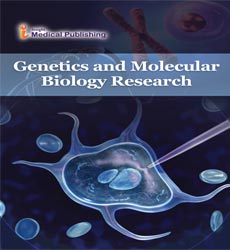Johns Hopkins University School of Medicine, USA
In genetics, a mutation is a modification of the genome of an organism, virus, or extrachromosomal DNA in the nucleotide sequence. Either DNA or RNA is present in viral genomes. Mutations result from DNA or viral replication errors, mitosis, meiosis, or other types of DNA damage that may then be subject to error-prone repair, cause an error during other repair forms, or cause replication error (translation synthesis). Due to mobile genetic elements, mutations can also arise from the addition or deletion of segments of DNA. Mutations may or may not cause discernible changes in an organism's observable characteristics (phenotypes). In both normal and abnormal biological processes, mutations play a role, including evolution, cancer, and immune system growth, including junction diversity. Mutation, which provides the raw material on which evolutionary forces such as natural selection will function, is the ultimate source of all genetic variation. Mutation can result in several different forms of sequence shift. Gene mutations cannot affect, change the gene product, or prevent the gene from functioning properly or fully. In nongenic areas, mutations may also occur. Because of the detrimental impact that mutations may have on genes, by reverting the mutated sequence back to its original state, species have mechanisms such as DNA repair to prevent or correct mutations. Mutations, usually by genetic recombination, may include the replication of large parts of DNA. These duplications are a significant source of raw material for new genes to evolve, with tens to hundreds of genes being duplicated every million years in animal genomes. Many genes belong, observable by their sequence homology, to larger gene families with common ancestry. Here, protein domains serve as modules that can be mixed together to generate genes encoding new proteins with novel properties, each with a specific and independent feature. For example, to create structures that sense light, the human eye uses four genes: three for cone cell or color vision and one for rod cell or night vision; all four evolved from a single ancestral gene. "In the gene pool, nonlethal mutations accumulate and increase the amount of genetic variation.
Open Access Journals
- Aquaculture & Veterinary Science
- Chemistry & Chemical Sciences
- Clinical Sciences
- Engineering
- General Science
- Genetics & Molecular Biology
- Health Care & Nursing
- Immunology & Microbiology
- Materials Science
- Mathematics & Physics
- Medical Sciences
- Neurology & Psychiatry
- Oncology & Cancer Science
- Pharmaceutical Sciences
